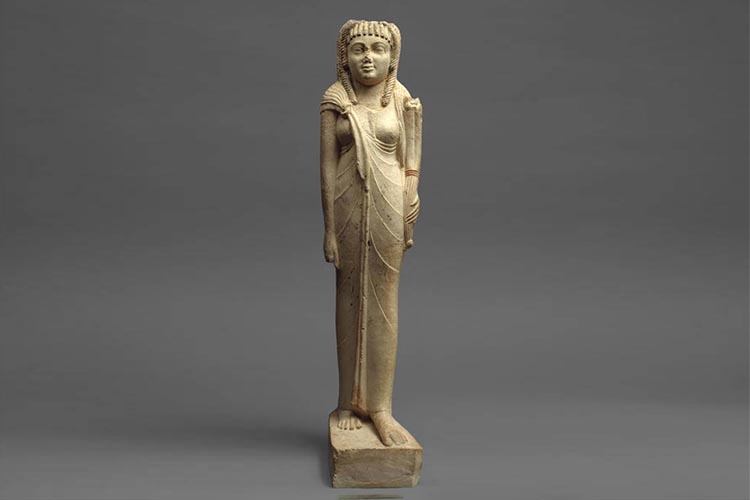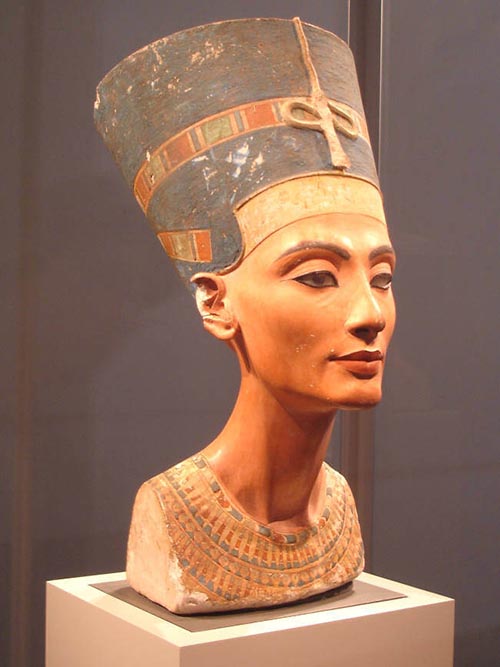Unveil the allure of ancient Egyptian art through 10 remarkable masterpieces spanning millennia along the Nile River. This collection showcases enduring beauty that remained largely unchanged for centuries
Ancient Egyptian art encompassed painting, sculpture, ceramics, jewellery, and more. Created along the Nile River from c. 3100 BC to 30 AD, it retained formal stylisation for over three millennia. Many examples originated in tombs intended for the afterlife.
THE SEATED SCRIBE
Dated to the Old Kingdom (c. 2500 BC), the Seated Scribe is a renowned work. This 53.7 cm high statue depicts an unknown scribe with a semi-rolled papyrus scroll. Meticulous detail, especially in the eyes, highlights its realism. Displayed in the Louvre, Paris, it was discovered in Saqqara in the mid-19th century.

MASK OF TUTANKHAMUN
The Mask of Tutankhamun, a death mask for Pharaoh Tutankhamun (reigned 1332-1323 BC), is iconic. Crafted from 10kg gold with lapis lazuli, turquoise, and more, it’s a masterpiece. Discovered in 1925, it’s now in the Egyptian Museum, Cairo.

NEFERTARI PLAYING SENET
From Nefertari’s tomb (QV66), a wall painting depicts Pharaoh Ramesses II’s wife playing Senet. Shading techniques emphasise her beauty. Discovered by Ernesto Schiaparelli in 1904, the tomb’s closed for preservation.

NARMER PALETTE
This 64 x 42 cm siltstone tablet, found by British archaeologists, depicts King Narmer’s unification of Egypt. Dated to the 31st century BC, it’s a vital artefact now in the Egyptian Museum.

ANI’S JUDGEMENT, BOOK OF THE DEAD
A scene from the Papyrus of Ani (c. 1250 BC) portrays the heart-weighing ceremony. Anubis weighs against Maat’s feather. The scene symbolises the virtuous life’s pursuit.

RELIEF OF AKHENATEN AND NEFERTITI
This home altar from c. 1350 BC depicts Pharaoh Akhenaten, his wife Nefertiti, and their daughters beneath a sun disc. It captures the Amarna period’s unique art style.

STATUE OF DJOSER
Representing Pharaoh Djoser (reigned c. 2630- 2611 BC), this statue is tied to Egypt’s first pyramid. Discovered in Saqqara in the mid-1920s, the original resides in the Egyptian Museum.

STATUETTE OF ARSINOE II
A fusion of Egyptian and Greek art styles, this limestone statuette reflects cultural interchange during Egypt’s Ptolemaic Dynasty (150-100 BC). Now in the Metropolitan Museum of Art, New York. These masterpieces reveal the rich tapestry of ancient Egyptian art.

STATUE OF MENKAURE AND QUEEN
Depicting Pharaoh Menkaure and Queen Khamerernebty II, this statue embodies ancient Egyptian ideals of rulership and gender. It resides in the Museum of Fine Arts, Boston.

NEFERTITI BUST
Crafted around 1350, the Nefertiti Bust is a fine example of Amarna art. Admired for its elegance, it’s now in the Neues Museum, Berlin.
